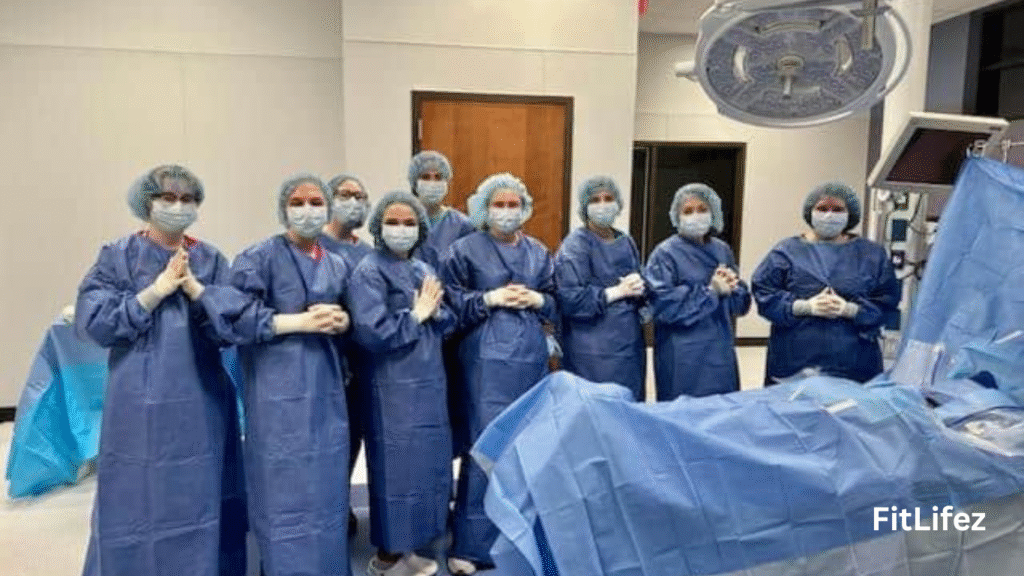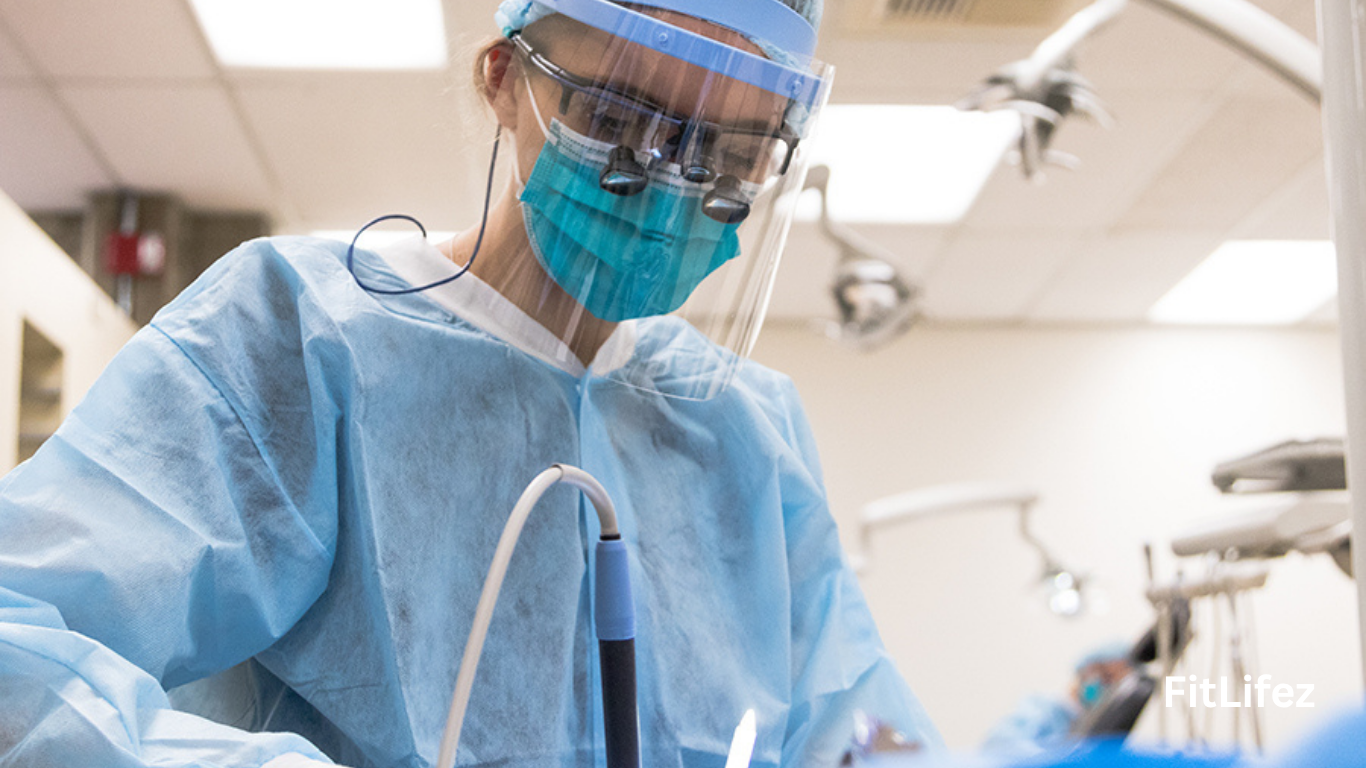Introduction
The healthcare industry is rapidly growing, and with it, the demand for skilled professionals in every aspect of human health. At the center of this growth lies the Division of Health Sciences, an academic and professional structure that includes education, research, and practical training in various health-related fields.
Whether you’re a student looking to pursue a career in healthcare, or simply interested in understanding how the healthcare system is structured, this article will guide you through everything you need to know about the Division of Health Sciences.
What Is the Division of Health Sciences?
The Division of Health Sciences is a broad and interdisciplinary branch within universities and healthcare institutions. It encompasses various departments, each dedicated to specific aspects of health, medicine, and wellness. These divisions work together to train future healthcare providers, conduct medical research, and support public health initiatives.
In academic institutions, the Division of Health Sciences typically includes programs like medicine, nursing, public health, pharmacy, biomedical sciences, and allied health professions. Its purpose is to promote a healthier society by preparing students to become competent professionals who can address today’s health challenges with knowledge, skill, and compassion.
This division also serves as a link between academic theory and practical healthcare applications. Through hands-on training, internships, clinical rotations, and research projects, students gain real-world experience that prepares them for successful careers in healthcare.
Core Departments Within Health Sciences
The structure of the Division of Health Sciences may vary from one university to another, but the following are the most common departments:
1. School of Medicine
The School of Medicine trains students to become doctors and surgeons. This department includes basic sciences like anatomy, physiology, and pathology, as well as clinical subjects such as internal medicine, surgery, pediatrics, and psychiatry. Students typically earn degrees such as MBBS, MD, or DO.
2. School of Nursing
Nursing is an essential part of healthcare. The School of Nursing offers programs that range from diploma-level training to doctorate degrees. Nurses are trained not only in patient care but also in health education, advocacy, and community service.
3. School of Public Health
This department focuses on disease prevention, health promotion, epidemiology, and community health. Public health professionals work in government agencies, NGOs, and health organizations to improve population health and prevent disease outbreaks.
4. Pharmacy and Pharmaceutical Sciences
Pharmacists play a critical role in medication management and patient education. This department teaches students about drug formulation, pharmacology, toxicology, and clinical pharmacy.
5. Allied Health Sciences
This includes a wide range of fields such as physical therapy, radiologic technology, occupational therapy, respiratory therapy, speech-language pathology, and medical laboratory sciences. These professionals support diagnosis, treatment, and patient recovery.
6. Biomedical Sciences
This department is research-focused, dealing with areas such as microbiology, genetics, biotechnology, immunology, and molecular biology. It helps in understanding the mechanisms of disease and in developing new treatments and technologies.
Popular Degrees in the Division of Health Sciences
Students interested in entering the health sciences have several academic paths to choose from, including:
- Bachelor of Health Sciences (BHS)
- Bachelor of Nursing (BSN)
- Doctor of Medicine (MD)
- Doctor of Physical Therapy (DPT)
- Master of Public Health (MPH)
- Doctor of Pharmacy (PharmD)
- Associate degrees and diplomas in Allied Health fields
Each of these degrees is designed to prepare students for specific careers in the health sector. Bachelor’s degrees provide foundational knowledge, while advanced degrees focus on specialization and leadership.
Career Opportunities in Health Sciences
One of the biggest advantages of studying in the Division of Health Sciences is the wide range of career options available. Here are just a few examples:
● Doctor or Surgeon
Graduates of medical school can become general practitioners, specialists (like cardiologists or neurologists), or surgeons.
● Nurse
Nurses can work in hospitals, clinics, schools, or home care settings. They may specialize in areas like emergency care, pediatrics, oncology, or geriatrics.
● Pharmacist
Pharmacists dispense medications, provide counseling, and help manage chronic diseases like diabetes or hypertension.
● Public Health Officer
They work in disease control, health education, and policy development. They are essential in managing public health emergencies like pandemics.
● Physiotherapist
They help patients recover from injuries, surgeries, or chronic conditions through physical rehabilitation.
● Medical Laboratory Scientist
They perform diagnostic tests that help doctors make accurate diagnoses and treatment decisions.
● Health Administrator
These professionals manage healthcare facilities, plan services, and ensure regulatory compliance.
Importance of Health Sciences in Modern Society

The significance of health sciences goes beyond individual careers. It plays a crucial role in shaping a healthy, informed, and resilient society. Here’s how:
- Improves Access to Healthcare: Through trained professionals and community programs.
- Enhances Quality of Life: Early diagnosis and effective treatment help people live longer, healthier lives.
- Fosters Innovation: Research in biomedical sciences leads to new drugs, vaccines, and medical technologies.
- Responds to Public Health Crises: Professionals trained in public health are essential during disease outbreaks and emergencies.
- Promotes Health Education: Encouraging people to adopt healthy lifestyles and preventive care.
Challenges Facing the Division of Health Sciences
Despite its importance, the Division of Health Sciences faces several challenges:
● Shortage of Professionals
Many countries, especially developing ones, face a lack of qualified health workers. Training and retaining professionals is a priority.
● Cost of Education
Health sciences programs are often expensive, making them inaccessible to some students.
● Technological Change
Keeping up with rapid advancements in technology requires continuous learning and curriculum updates.
● Burnout and Mental Health
The physical and emotional demands of healthcare careers can lead to stress, burnout, and compassion fatigue among workers.
Addressing these challenges requires support from governments, educational institutions, and healthcare providers.
The Future of Health Sciences
The field of health sciences continues to evolve with advances in artificial intelligence, telemedicine, genomics, and personalized medicine. Here’s what the future holds:
- More Use of Technology: Virtual learning, remote surgeries, wearable health devices.
- Greater Interdisciplinary Collaboration: Between medicine, data science, and engineering.
- Focus on Mental Health: Expanding mental health education and services.
- Global Health Efforts: Addressing climate change, pandemics, and global inequalities.
- Preventive Care Models: Moving from treatment to prevention through lifestyle education.
As the world faces new health challenges, the Division of Health Sciences will remain at the center of progress and innovation.
Interdisciplinary Collaboration in Health Sciences
One of the greatest strengths of the Division of Health Sciences is its ability to bring multiple disciplines together to solve complex health issues. The human body, health behaviors, and diseases are influenced by many factors — biological, psychological, social, and environmental.
This is why collaboration among various health fields is critical. For example, when treating a patient with diabetes, a multidisciplinary team may include a doctor, nurse, nutritionist, pharmacist, and even a psychologist to manage all aspects of the patient’s condition. This collaborative care ensures that treatment is not just symptom-focused but also supports long-term wellness.
In educational institutions, this collaboration is encouraged from the beginning. Many programs now include interprofessional education (IPE), where students from nursing, pharmacy, medicine, and allied health fields learn together. This teaches them to understand each other’s roles, communicate effectively, and work as a team. It improves patient outcomes and builds a culture of mutual respect among healthcare professionals.
Additionally, research in health sciences often requires input from different departments. For instance, a study on heart disease might involve cardiologists, exercise scientists, public health experts, and geneticists working together. This merging of perspectives leads to better research outcomes and more impactful discoveries.
Interdisciplinary collaboration strengthens healthcare delivery systems, improves problem-solving, and prepares professionals for real-world practice where teamwork is the norm. It’s no longer enough to specialize in one area — successful health professionals must understand how different roles come together to provide holistic care.
Global Health and the Role of Health Sciences
In today’s interconnected world, health issues are no longer confined to one country or region. Global health has emerged as a critical focus area within the Division of Health Sciences, aiming to address health disparities, infectious disease outbreaks, and healthcare system challenges across borders.
Institutions now offer specialized programs in Global Public Health, which train students to work with international organizations like WHO, UNICEF, and Medicines Sans Frontiers (Doctors Without Borders). These programs teach how to implement vaccination programs, improve sanitation, and respond to humanitarian crises.
Global health professionals are often called to action during pandemics, natural disasters, or refugee crises. The COVID-19 pandemic clearly highlighted the importance of global health collaboration. Researchers from different countries worked together to develop vaccines, while public health experts coordinated responses and shared resources.
Health science students and professionals trained in epidemiology, virology, and emergency management were crucial to these efforts. Their contribution saved millions of lives.
Moreover, the Division of Health Sciences plays a key role in reducing global health inequalities. Many communities in low- and middle-income countries still lack access to basic healthcare services. By training professionals who understand these challenges, and by conducting research that addresses real-world problems, health sciences institutions help bridge the gap. They also support local health systems through partnerships and capacity-building programs.
Global health education also fosters cultural sensitivity, language skills, and ethical awareness — all essential for those working across diverse populations. Whether through research, policy, or direct care, the Division of Health Sciences is central to creating a healthier, more equitable world.
Preparing Students for Real-World Healthcare Challenges
The modern healthcare landscape is complex, fast-paced, and constantly evolving. To ensure graduates are ready to succeed, the Division of Health Sciences prioritizes hands-on learning and real-world preparation.
This begins with a strong foundation in scientific knowledge, followed by practical experience through clinical rotations, internships, community outreach, and simulations. Students are placed in hospitals, clinics, laboratories, and public health settings where they work under the supervision of experienced professionals.
Simulation labs, for example, are an increasingly popular method for training future healthcare workers. These labs replicate real medical scenarios — such as delivering a baby or responding to cardiac arrest — using lifelike mannequins and high-tech equipment. Students practice their clinical decision-making, teamwork, and technical skills in a safe, controlled environment before working with actual patients.
Moreover, many programs include modules on communication, ethics, leadership, and health policy — ensuring students are not only clinically competent but also professionally prepared. In rural and underserved areas, field placements allow students to experience challenges such as limited resources, cultural barriers, and high patient loads. These experiences teach adaptability, empathy, and resilience — qualities that are just as important as technical knowledge.
The integration of digital tools and telehealth training is another crucial aspect of modern health sciences education. With the rise of remote consultations and electronic health records, students are trained to use technology effectively to improve patient care.
By focusing on holistic, practical, and interdisciplinary education, the Division of Health Sciences ensures that graduates are not just job-ready, but equipped to become leaders and change-makers in the healthcare industry.
Conclusion
The Division of Health Sciences plays a vital role in training the healthcare workforce, conducting groundbreaking research, and improving community well-being. Whether you’re aiming to become a doctor, nurse, therapist, or public health expert, this field offers meaningful careers that impact lives every day.
From education and research to patient care and prevention, the division is a powerful force in modern society. It bridges the gap between science and service, knowledge and compassion — creating a healthier world, one professional at a time.

